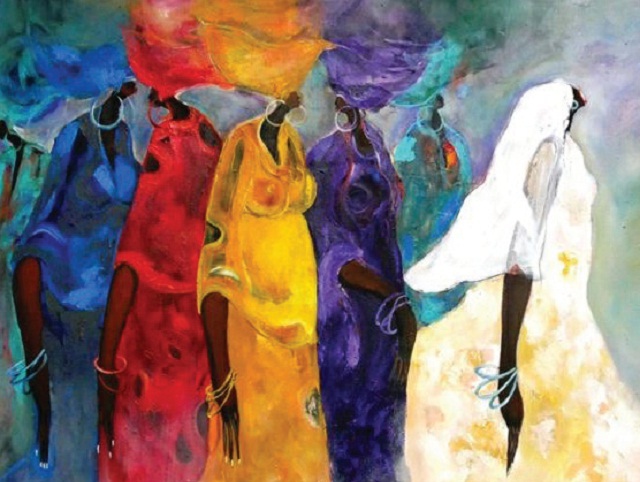
Beyond the label, is there any truth to the compartmentalisation?
Kampala, Uganda | DOMINIC MUWANGUZI | When Jak Katarikawe started to make art in the 1960s, everyone was stunned. Katarikawe, an illiterate, was a driver for David Cook, a Makerere University Professor of Literature (1962 1977). Katarikawe’s break through as an artist; drawing stylish images of bulls with long horns and bright –wide stares; illustrated his amateurish style of not paying attention to elements like picture construction and pure colour schemes on canvas that are familiar with formal art education.
As such, he soon was labeled a selftaught artist. But Katarikawe had previously, in his youth, been an apprentice for his mother who decorated the Ankole huts in the rural areas of Kigezi, South Western Uganda, where the artist hails from.
More so, his prolonged stay at Makerere and relations with artists Sam Ntiro, Theresa Musoke, and Eli Kyeyune from the school of Fine Arts must have inspired his artistic practice. In fact, it was his boss, David Cook who introduced him to Ntiro to teach him the art discipline.
Although he later dropped out because he could not keep pace with theoretical aspects of art studies, he had been exposed to the discipline. In the same manner, the highly proficient, Mathias Tusiime, has been described as a self- taught artist by both local and international art patrons.
Tusiime’s style of “scribbling” caricature like images on canvas with no formal attribute connotes his independence from the formal art school curriculum. However, the artist’s duty at the School of Fine Art includes cleaning the art studio where students paint from and collecting waste paint and canvas.
With his overt ambition to be a successful artist, Tusiime collects these materials and quietly experiments with them. As a result of his experimentation processes, not to mention his continuous interaction with the faculty professors, he is able to create art that many find both intuitive and intriguing.
His non- derivative style has elicited a number of patrons for his art and prompted his invitation to the University of Virginia, USA. In both scenarios of Katarikawe and Tusiime, it is evident that the label of self-taught artist does not hold. This is because, the two had exposure to art although informally.
In the case of Katarikawe, he learnt to draw from his mother as a young man and later his relations with prof. David Cook contributed to his advanced knowledge of the profession. For Tusiime, it is his continuous stay at the School of Fine Art-since 1999 to date- that has defined his artistic expertise.
Nonetheless, learning is not a passive or individual process, but a social procedure. In this regard, the more an individual interacts with artists or an institution either formally or informally, the more they acquire knowledge and skills in art.
This philosophy applies to Anwar Sadat Nakibinge and Enoch Mukiibi who did not study art at the any university. Nakibinge did Health Science and Mukiibi graduated with a Bachelor of Arts in Social Linguistics and Literature.
Mukiibi’s father is an accomplished professional artist and, as such, his work must have influenced his son through immediate exposure. Alternatively, Nakibinge’s elder brother, Jjuuko Hoods, is a successful artist working on the Kampala contemporary art.
There’s little doubt that the young brother inherited inspiration to create art from observing the elder brother working in the studio.
The notion of “self-taught artist” is used to describe artists who learn to create art without any formal training. But could this be erroneous in some cases? To what extent do their inquisitive minds provide the inspiration to learn through unconventional avenues?
Isn’t observing a master of the craft creating art, apprenticeship in studios, or merely experimentation with immediate media, a form of learning? When viewed in light of such arguments, learning ceases to be static. It becomes progressive.
It is this progression that contributes to the uniqueness of the so-called self-taught artist because their art is devoid of plagiarized western concepts.
 The Independent Uganda: You get the Truth we Pay the Price
The Independent Uganda: You get the Truth we Pay the Price




Jak is the greatest East African painter, Uganda should have a museum just for him !